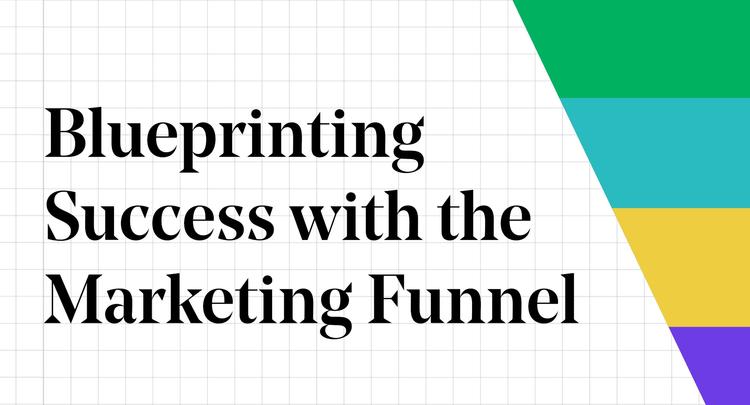The Marketing Funnel Is a Blueprint for Your Success

The Marketing Funnel Is a Blueprint for Your Success
For any brand looking to connect with an audience to drive growth or conversions, the Marketing Funnel is a tried-and-true model that illustrates how to attract, engage, and convert audiences into loyal customers. While today’s marketing environment means tactics and strategies change and evolve, the Marketing Funnel retains its integrity as a reflection of the customer journey from awareness to advocacy.
Businesses and organizations that embrace the Marketing Funnel can strategize more targeted and effective marketing campaigns to yield higher returns.
But what exactly is the Marketing Funnel, and why should anyone pay attention to it? Let’s unpack the fundamentals.
What Is the Marketing Funnel?
The Marketing Funnel is a visual tool that shows a customer’s path from brand introduction to conversion. The top represents the entry point for potential customers, and the bottom reflects customers who convert after going through the funnel (by making a purchase or taking action).
The Funnel is traditionally divided into four phases. Each phase leverages specific marketing tactics to connect with potential customers.
- Brand Awareness
- Consideration
- Decision Making
- Brand Advocacy
Why You Should Use the Marketing Funnel
By breaking down the customer journey into Marketing Funnel stages, you can:
- Optimize Resources: Focus efforts on the right audience at the right time, maximizing efficiency and their budgets.
- Personalize Messaging: Tailor communications to resonate with prospects based on their stage in the funnel.
- Increase Conversions: Guide prospects through the journey with content and tactics that address their specific needs.
- Measure Success: Pinpoint areas of strength and identify leaks in the funnel to improve performance.
Aligning Tactics to Marketing Funnel Stages
Each stage of the Marketing Funnel demands different tactics. By aligning your initiatives to where the audience is in their journey, you can deliver the right message at the right moment.
Phase 1: Brand Awareness
The initial phase of the Marketing Funnel is where businesses focus on creating brand awareness and attracting potential customers. The Awareness Phase is crucial for introducing the brand, making a strong first impression, and capturing the attention of your target audience. Tactics for this phase can include:
+ Content marketing includes blog posts, tutorial videos, and white papers.
+ Paid media, from digital display ads and pay-per-click (PPC) campaigns to strategic paid social media ads.
+ SEO to optimize keywords to ensure prospects find the brand through organic search.
+ Public relations to build credibility and visibility through earned media and sponsorships.
Phase 2: Consideration
Next is the Consideration Phase, where you educate and build trust with potential customers while differentiating your brand from its competitors. Customers know their needs at this stage and actively research and compare available solutions. Tactics for this phase can include:
+ Email marketing nurtures leads with personalized and informative email sequences.
+ Webinars and events offer valuable insights and engage directly with potential customers.
+ Case studies demonstrate success stories to show how the brand solves problems.
+ Retargeting ads effectively re-engage users who have interacted with the brand but haven’t converted.
Phase Three: Decision Making
At this stage, called the Conversion Phase, the focus shifts to removing barriers, reinforcing trust, and providing a frictionless path to conversion. This is where potential customers make the decision to purchase or take a desired action (e.g., sign up, subscribe, buy, or register). Tactics for this phase can include:
+ Product demos and free trials allow prospects to experience the product or service firsthand.
+ Paid search ads capture people actively searching keywords directly related to your products or services.
+ Discounts and promotions create a sense of urgency to encourage timely conversions.
+ Landing pages, optimizing clear calls to action, and increasingly targeted/streamlined user experiences.
+ Testimonials and reviews build trust with authentic customer feedback.
Phase Four: Brand Advocacy
Although the Marketing Funnel traditionally ends at conversion, innovative brands recognize the importance of including an Advocacy and Retention Phase, where satisfied customers can become loyalists and brand ambassadors who feed new prospects into the Marketing Funnel. This is when the most powerful marketing tools are in play: word-of-mouth, online reviews, and referrals. Tactics for this phase can include:
+ Loyalty programs reward repeat purchases and long-term engagement.
+ Exclusive content provides ongoing value to deepen customer relationships.
+ Community building by fostering spaces where customers can interact and engage with the brand (and sometimes each other).
What’s More Important Than Conversions
A well-executed Marketing Funnel isn’t just a tool for driving sales — it’s a blueprint for sustainable growth. By understanding where potential customers are in their journey and aligning marketing tactics accordingly, you can build stronger connections, inspire trust, and ultimately drive long-term success.
Applying the Marketing Funnel to an integrated marketing effort provides a structured framework for guiding prospects through the buyer’s journey, ensuring that every stage is addressed cohesively across multiple channels and touchpoints. This alignment enhances efficiency, effectiveness, and customer experience.
If your business is ready to optimize and refine its marketing efforts, embracing the Marketing Funnel is a step toward more innovative, more effective strategies that resonate with audiences at every turn.